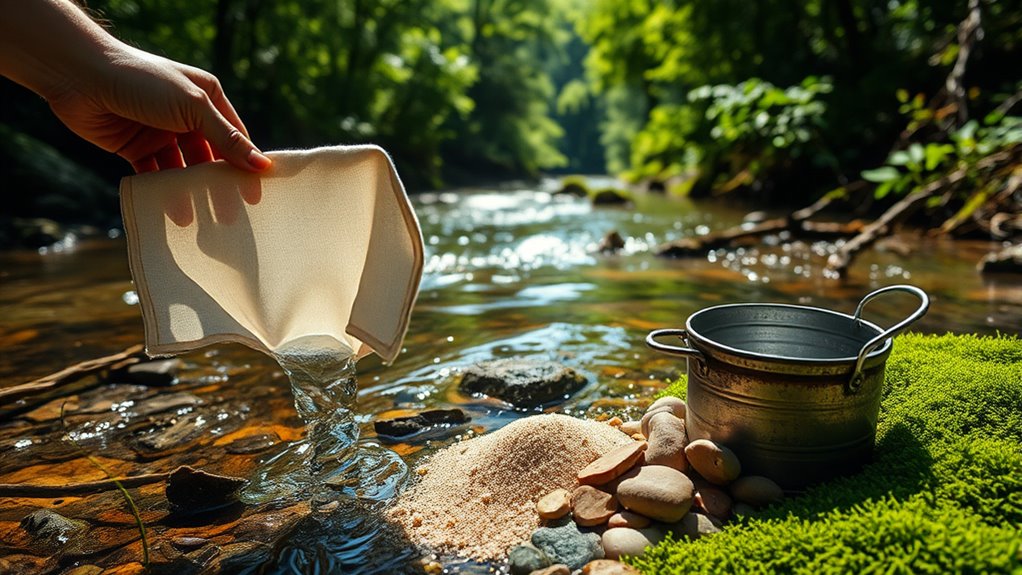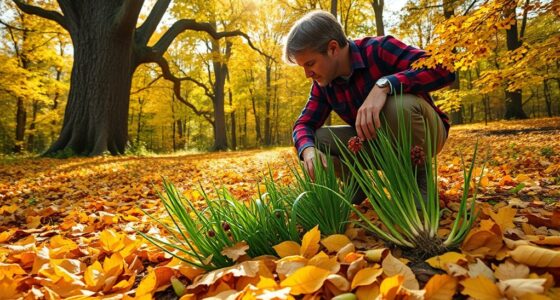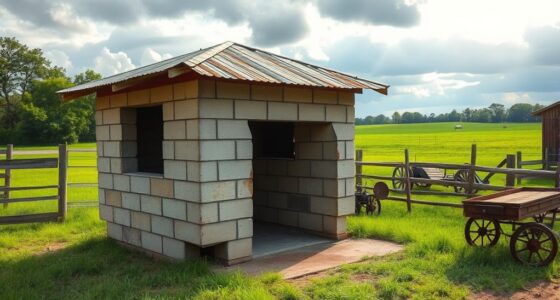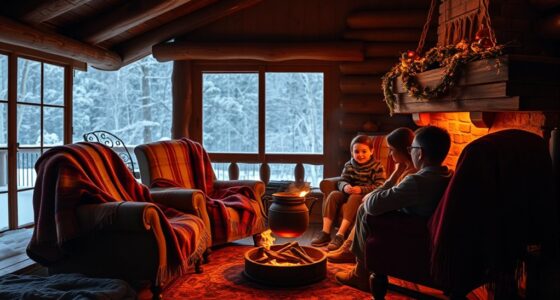When filtering water in the wild, start by boiling it for 1-3 minutes to kill harmful bacteria. Portable filters are great for solo trips, while pump and gravity filters suit larger groups. You can also improvise using natural materials like sand and charcoal, but always pair them with boiling for extra safety. Remember to choose flowing water and camp away from sources to avoid contamination. Stick around to uncover more essential techniques for staying safe and hydrated outside.
Key Takeaways
- Boiling water for 1-3 minutes effectively kills bacteria and microorganisms; extend time at high altitudes.
- Use portable filters like straws or pumps for lightweight, effective filtration, ensuring NSF certification for safety.
- Gravity filters can purify large volumes (up to 4 liters) hands-free, utilizing gravity for efficient water treatment.
- Natural materials, like pine sapwood and charcoal, can filter water; combine with boiling for enhanced safety.
- Always treat water from flowing sources and maintain a distance of 200 feet from water bodies to avoid contamination.
Boiling: The Most Reliable Method
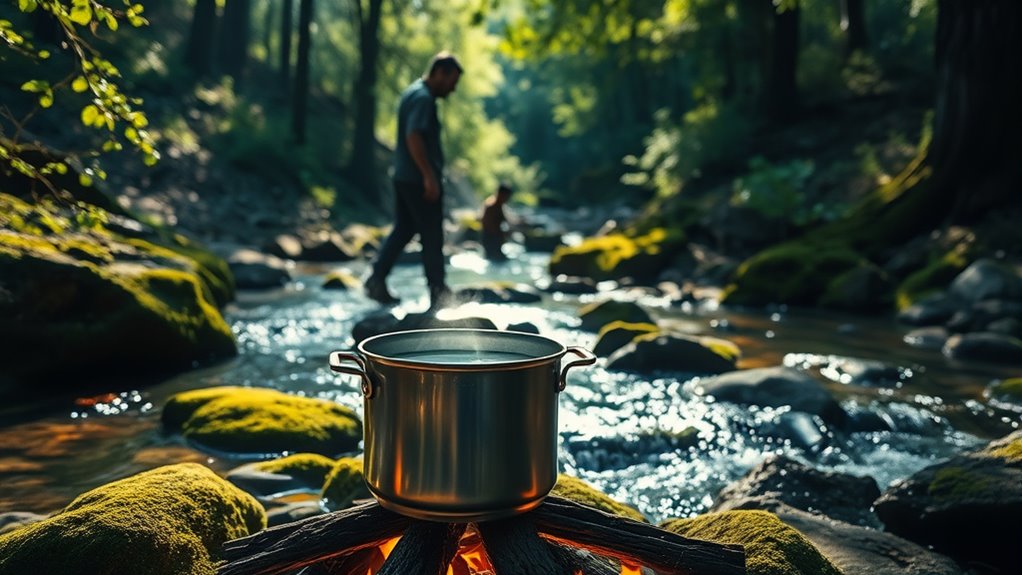
Boiling water is your best bet for purifying it in the wild. It's the cheapest and safest method, effectively killing most bacteria and microorganisms.
To ensure safety, boil the water for 1-3 minutes at a rolling boil. Remember, at high altitudes, you'll need to extend the boiling time due to lower boiling points.
Boil water for 1-3 minutes at a rolling boil, extending time at high altitudes due to lower boiling points.
Make sure you use a heat-resistant container, like metal or ceramic, and if you're in a pinch, hot rocks can work with makeshift containers. Always handle boiling water carefully to avoid burns, letting it cool before you drink.
Keep in mind that boiling doesn't remove physical contaminants, so start with clear water to maximize effectiveness. Finding a safe water source is crucial before boiling.
Portable and Pump Filters: Quick Solutions

When you're looking for quick water purification solutions in the wild, portable and pump filters can be a game changer.
Straw filters, for instance, are lightweight and perfect for solo adventurers, allowing you to sip directly from streams.
Pump filters, like the MSR MiniWorks EX, are excellent for larger groups, efficiently removing contaminants with a manual pumping action.
Bottle filters combine convenience with filtration, making them ideal for daily use.
Remember, flow rate matters—higher rates speed up the process, especially for groups.
Always check for NSF certification to ensure safety against bacteria and protozoa.
With the right filter, you'll stay hydrated and healthy on your outdoor adventures, no matter your group size. Additionally, understanding the importance of water filtration technology can help you choose the most effective filter for your needs.
Gravity Filters: Ideal for Groups

Gravity filters serve as an ideal solution for groups seeking efficient water purification in the wild. These systems utilize gravity to push water through a filter medium, effectively removing contaminants.
With the ability to filter up to 4 liters at once, gravity filters like the Platypus GravityWorks offer a flow rate of 1.75 liters per minute, making them perfect for larger gatherings. The setup includes a dirty water bag and a clean water bag connected by a hose, allowing for hands-free operation.
While they require regular cleaning and backflushing to maintain efficiency, their durability and capacity outshine other methods. Although gravity filters may come at a higher cost, their convenience and efficiency make them a worthwhile investment for group adventures.
Improvising Water Filters With Natural Materials

For those venturing into the wild without access to commercial filters, improvising water filters using natural materials can be a practical solution. You can utilize materials like pine trees, sand, and charcoal to create effective filters.
For instance, using sapwood from pine trees can filter out over 99% of bacteria like E. coli. Soil and sand can also help reduce sediment, though they're less effective against bacteria. Additionally, charcoal and certain fruit peels can remove impurities.
While these methods are cost-effective and accessible, keep in mind they mightn't eliminate all contaminants. Combining these natural filters with boiling or chemical purification can enhance your water's safety, ensuring you stay hydrated on your adventure.
Best Practices for Wilderness Water Treatment

To ensure safe drinking water in the wild, it's essential to follow best practices for treatment. Start by choosing flowing water sources like streams, as they're typically cleaner than stagnant lakes.
Always treat water, using reliable methods like boiling for at least one minute or using a filtration system to remove pathogens. Chemical disinfectants like chlorine dioxide are effective against Giardia.
Remember to camp at least 200 feet from water sources to prevent contamination and dispose of waste properly. Use a prefilter when collecting water to avoid clogging your treatment system.
Always carry a backup method, like boiling, and practice these techniques before your trip to ensure you're prepared for any situation.
Frequently Asked Questions
How Do I Know if Water Is Safe to Drink?
To know if water's safe to drink, you should check for clarity, smell, and taste.
If it's murky, has an unusual odor, or tastes strange, don't drink it. Look for signs of contamination, like floating debris or dead animals nearby.
Use pH strips to test acidity and, if possible, measure for dissolved solids.
When in doubt, always boil or treat water with purification tablets to kill harmful pathogens before consumption.
Can I Use Tap Water for Outdoor Filtration?
Yes, you can use tap water for outdoor filtration, but it's important to consider its quality.
While tap water is generally safe, it may contain contaminants that you'll want to filter out.
Using a portable filter designed for outdoor use can improve its safety and taste, removing bacteria and protozoa.
Just make sure the filter you choose is certified and effective against the specific contaminants you're concerned about, especially in emergencies.
What Is the Shelf Life of Water Filters?
The shelf life of water filters varies, but most remain effective for up to two years if stored properly.
You should keep them in their original packaging and in a cool, dry place to maximize longevity. Environmental factors like humidity can reduce their lifespan, so be mindful of storage conditions.
Always check the manufacturer's guidelines for specific recommendations on usage and replacement to ensure your filter performs optimally when you need it.
Are There Specific Plants That Help Purify Water?
Yes, there are specific plants that can help purify water. Reeds, grasses, and rushes act as natural filters, absorbing toxins from water.
Aquatic mosses, like Warnstofia fluitans, can significantly reduce arsenic levels. Hydrilla verticillata absorbs heavy metals, while duckweed tackles agricultural pollutants.
These plants utilize mechanisms like phytoaccumulation and rhizofiltration to clean water, making them effective and sustainable options for purification.
How Can I Store Filtered Water Safely in the Wild?
You might think any container can hold water, but that's not true. To store filtered water safely in the wild, use BPA-free, food-grade containers.
Keep them in cool, dark places to prevent bacteria from growing. It's also smart to store them off the ground to avoid chemicals and pests.
Regularly check your water for signs of contamination, and label containers with dates to ensure you're drinking the freshest water possible.
Conclusion
When you're out in the wild, drinking unfiltered water is like inviting a pack of wolves to your picnic—just plain reckless! So, arm yourself with these essential techniques, whether it's boiling that water until it's bubbling like a hot spring or using a portable filter that works faster than your buddy's unfortunate hiking tales. Remember, safe water is your lifeline, and with these tactics, you'll conquer the wilderness like a hydration hero! Stay safe and drink smart!

